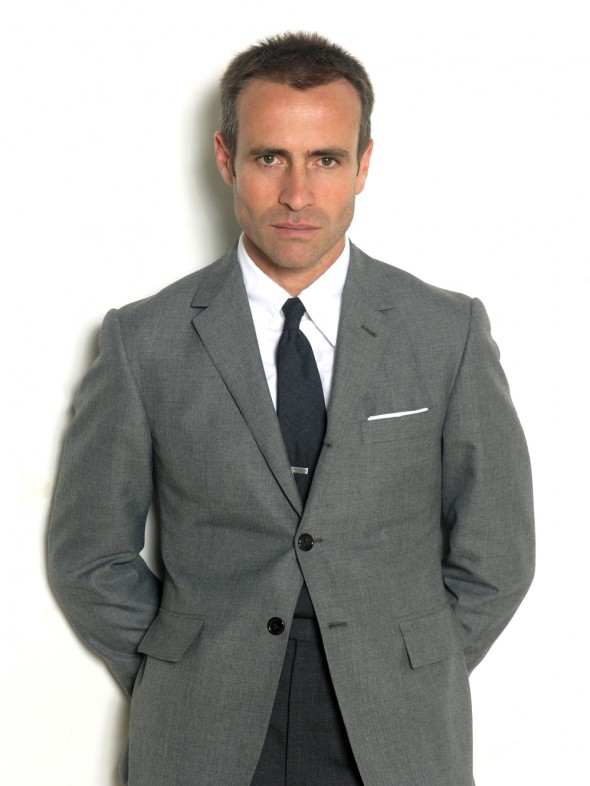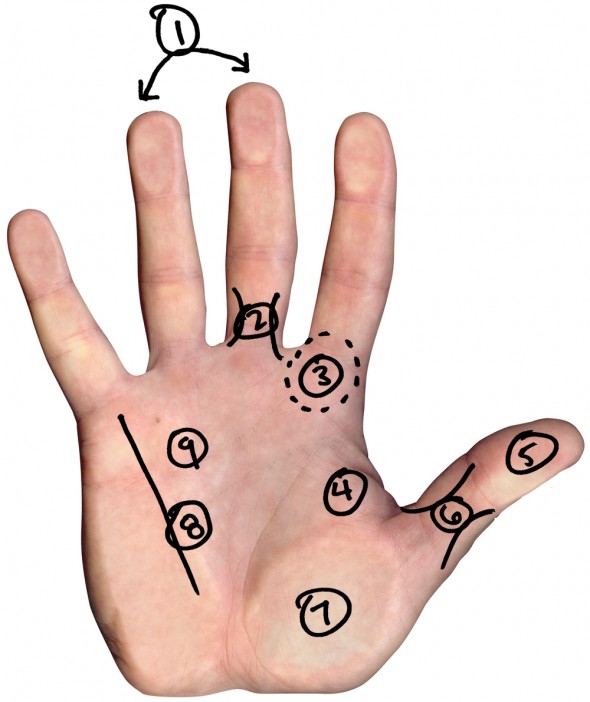
The prince of proportion raises hemlines, expectations and in the process saves the suit.
Any conversation about men’s fashion today inevitably involves Thom Browne. Since establishing an eponymous collection in 2001, Browne has grown a made-to-measure suiting business alongside a limited collection of tops, shorts, slacks, knits, and button downs. While he boasts major fashion cred—thanks to space at Bergdorf Goodman and a CFDA award for menswear in 2006—Mr. Browne is simultaneously subversive, rebelling against casual trends with suiting for the young-at-heart.
Controversy revolves around the signature Thom Browne silhouette—slacks that never go so far as to break at all and, instead, fall anywhere from mid-calf to ankle. His jackets are slim fitting but not necessarily tapered, with cuff buttons that function, slim lapels, slim ties, and oodles of attitude.
Meanwhile, Mr. Browne is simultaneously working on a collection of men’s jewelry for Harry Winston and he was personally referred by Anna Wintour to work on high-end suiting for Brooks Brothers in a newly-launched guest designer program called Black Fleece. He seems to be the guy major fashion brands are asking to modernize their appeal. And he’s got the old guard shaking in their penny loafers.
Would you say that you have always been drawn to a particular type of fashion aesthetic or was it something that occurred over time?
I grew up wearing navy blazers with khakis in the summer and grey flannel trousers in the winter, and my father always wore a suit so this (wearing a suit or sport coat) has always been very natural to me. I’ve always been drawn to the late ‘50s and ‘60s because this was a time when there was a distinct American sensibility.
There seemed to have been a moment when it crystallized for you, in 1997, to stop pursuing an acting career, sell your car and move to New York. What were you looking for?
I was pursuing acting then but couldn’t get much work. I had done some commercials, but after some time I decided to sell my car (it was an old Mercedes station wagon), and came out to New York knowing that I had some contacts. When I was living in Los Angeles, I would buy old Brooks Brothers or Oxxford suits and cut them down to sort of look like what I do now. When I returned to New York, I worked for fashion companies, and as much as I am appreciative of what I learned, they were essentially “jobs,” and I knew that I always wanted to do what I do now.
What kind of self-promoting tips are essential for young fashion designers wanting to follow in your footsteps? Are there any things that you know from experience young designers should avoid?
I initially started by making five suits for myself, and that alone drew some customers, whom I saw in my apartment, until I was able to move to a small by-appointment shop on Little West 12th Street. I don’t really follow what other designers are doing, but I think what I would say to young fashion designers is to find what they really want to do and do it without compromise.
Could you describe the first time you met Anna Wintour?
The first time I met Anna I was the finalist of the CFDA Vogue Fund in 2005. I received the runner-up prize, but I was really impressed with how involved she was. On top of all she does as an editor for such a big magazine, she was, and I have heard from others as well, that she is extremely attentive to designers and their needs. She was the one that instigated my collaboration with Brooks Brothers.
What inspires Thom Browne?
Many things inspire me. Often times they are people I may see on the street. It’s not only how they dress but their presence and attitude.
You’ve said how putting on a jacket is an ‘anti-establishment’ stance. Could you describe what represents ‘the establishment’ today?
Well, I often say this because everyone seems to wear a T-shirt and jeans everywhere. Especially in recent years with designers creating very expensive jeans and T-shirts with embellishments, that it’s become acceptable for people to dress that way anywhere they go. So in a sense that has become the establishment, and what I do, or what I wear, is the anti-establishment. But even within the tailored-suiting genre, what I do is anti-establishment from the point of view that my proportions are very different.
What are your personal goals for collaborations with Harry Winston and Brooks Brothers?
For Harry Winston, I am creating a line of men’s jewelry that includes watches, cufflinks, tie bars, rings; basically everything a guy would need or want. The collection I design for Brooks Brothers is called Black Fleece, but for them, it is very important for the collection to, of course, have my sensibility, but to fit under the Brooks Brothers umbrella. Both collections start from the same place. But for my own collection, I am responsible to myself, and I will always want it to be about provoking people, and make people think, whereas Black Fleece should be part of Brooks Brothers, and should appeal to a wider range of people.
– Patrick Knowles

Reading by Lena, who has no idea this palm belongs to Thom Browne.
1. In light of the previous and with this financial line, this is a person who will enjoy managing their stock portfolio and will be good at it. The ebb and flow of commerce, the elements of risk and chance within it will interest him.
2. Fame is likely, although he is leery of it. He would prefer wealth and respect to fame. If he ever reaches the level of being pursued by the paparazzi, he will hate it!
3. This person will go in their own way and will not swerve—even when swerving would be an excellent idea—if it were someone else’s idea!
4. A bit of a gambler here. Likes games of chance where he has a possibility of having some control and choice, such as card games rather than roulette.
5. Intense dislike of recalcitrant machinery and finds most machinery to be recalcitrant—for him.
6. Has excellent impulse control and is highly civilized. Quite gentle with the feelings of others.
7. Strong-minded and stubbornly independent.
8. Career and life path are entirely self-chosen. No familial influence on this. Chosen early and re-chosen and adjusted every decade or so for personal preference, though the original direction is still the primary focus.
9. A collector of beautiful objects. Needs more storage space—always—no matter how much there is.

